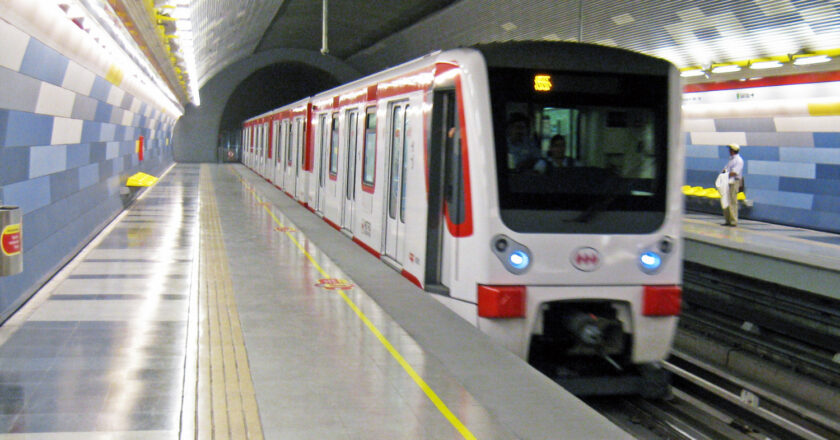The morning of Monday, 7 April, will be remembered for the chaos generated by an incident on the most congested section of line 1 of the Santiago de Chile metro. At the start of rush hour, a tyre failure on one of the trains caused the closure of two of the most central stations.
The problem originated at around 7:38 a.m. due to a burst tyre on a train at Santa Lucia station. The train had apparently started having problems at Los Héroes station and was on its way to Los Dominicos, the eastern end of the line, for repairs.
The punctured wheel had to be changed on the spot to resume running, which led to the closure of the Santa Lucia and Universidad Catolica stations. With 1 million users per day, line 1 is the most used line of the network, especially in the affected section.
Like lines 2 and 5, line 1 uses Michelin technology that adds tyres to the steel wheels to improve grip and thus the ability to accelerate and climb steep inclines.
Until 10:56, when normal service was resumed, line 1 was divided into two sections: San Pablo-Universidad de Chile and Baquedano-Los Dominicos. Despite the fact that 110 buses were deployed to replace the metro, the chaos generated was great, and there were many complaints about the poor organisation.
In recent years, Santiago’s metro network reliability has dropped worryingly. While the historical average is 3 to 5 significant incidents, some sources put the number at 67 in the last 12 months.
This incident is part of a worrying increase in system failures. In the last 12 months, 12 significant incidents have been reported in justifications on Metro de Santiago’s website. This is well above the historical annual average of 3 to 5 incidents.
These facts are increasing the discontent of the users of the primary means of transport in the Chilean capital, which they denounce for increasing fares while worsening the quality of service.


